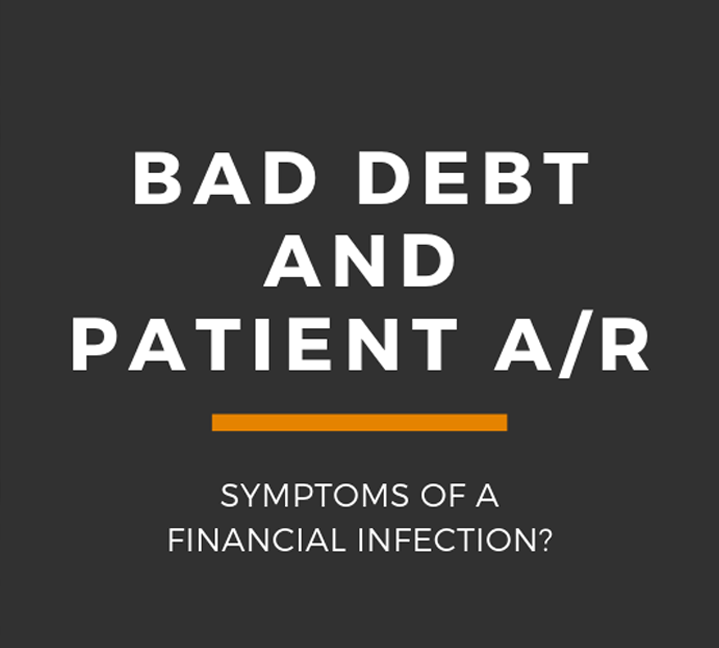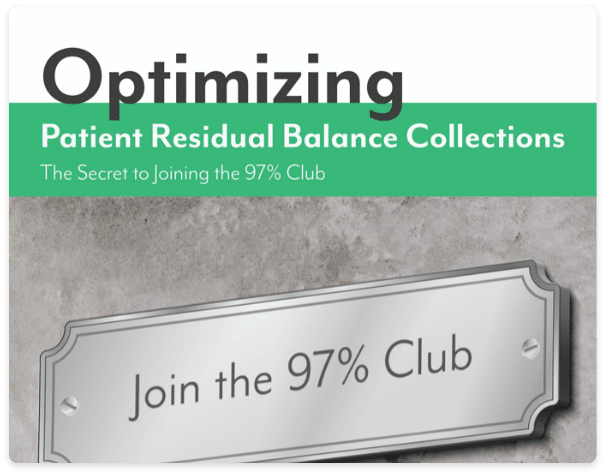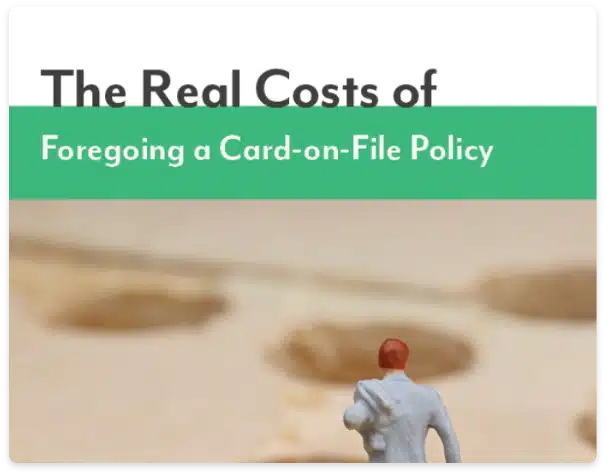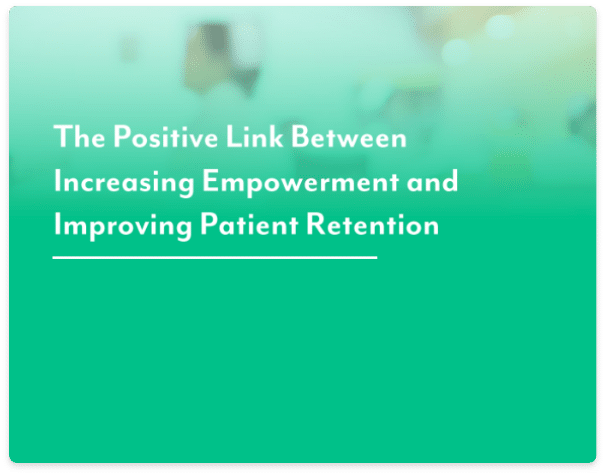Hey folks! Guess what will be here before we know it? Flu season! Yup! In a month or so, it will be time to get those flu shots or stock up on elderberry syrup if shots aren’t your thing. My favorite part of the flu? Hmm. I’m torn between the bone-cracking aches and pains and the feeling that my body has been thrown into a raging bonfire, alternating with full-body chills. Sounds like fun, right? Yeah… not so much.
A fever is an unpleasant yet necessary indication of a systemic infection or widespread inflammation of the body. It is a broad symptom that tells us that a closer inspection is needed to determine the exact problem so that it can be treated. Just as an elevated temperature is a clear sign that something is wrong in the body, a high level of bad debt in a medical practice is a serious warning that you may be ineffectively handling patient payments.
Due to the increased adoption of high-deductible healthcare plans (HDHPs), healthcare-related bad debt has become a major issue for both providers and patients. According to the Medical Group Management Association (MGMA), practices with the highest performance have only 7-10% of their total A/R in the 120+ days category, versus the average of 15-20%.
The problems of bad debt and aged A/R are only getting worse as patients become more financially responsible for healthcare. Providers must update their payment tools to ones that allow patients to pay at the time-of-service and keep payment information on file for automatic payment of balances owed after insurance processes their claim. I can’t tell you how many medical bills I have received where I wish the provider could have just automatically charged me instead of forcing me to sit down with my bill, my computer or my checkbook, and maybe even some stamps if I have to manually mail in the payment. The fewer obstacles patients have to pay, the more likely the payment will be made. It’s that simple.
If you practice finds that it’s smothered by bad debt and aged A/R, it’s time to evaluate what processes and policies are blocking revenue flow.
There’s no doubt that the mystery around medical costs greatly inhibits patients’ ability to pay. A 2015 Public Agenda report found that patients who understand their financial obligations are more likely to meet them. Experts suggest that providers use a charge estimator tool pre-service to help calculate out-of-pocket costs for patients. Self-service pricing calculators also have the potential to boost patient retention and satisfaction because they appeal to the modern, information-seeking healthcare consumer. Patients with access to cost estimate calculators have shown to display greater engagement and are more likely to seek help managing their healthcare costs.
Medical practices themselves can play a key role in helping patients more effectively manage these costs simply by offering greater price transparency for common treatments and procedures pre-arrival, at point-of-service, at claim submission, and pre-surgery. Along with providing better healthcare cost estimates, switching to tech-based tools for patient RCM has
the power to virtually eliminate human error, thereby significantly reducing claims denials and problems with unbilled A/R, which will eventually become aged A/R and bad debt.
They say an ounce of prevention is worth a pound of cure. Wouldn’t it be easier to have the right tools in place so that your practice doesn’t end up suffering from aged A/R and bad debt? That’s where Health iPASS comes in. Check out our website and schedule a demo of our solution so that your practice can return to full health.







